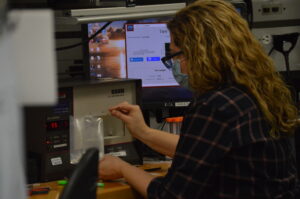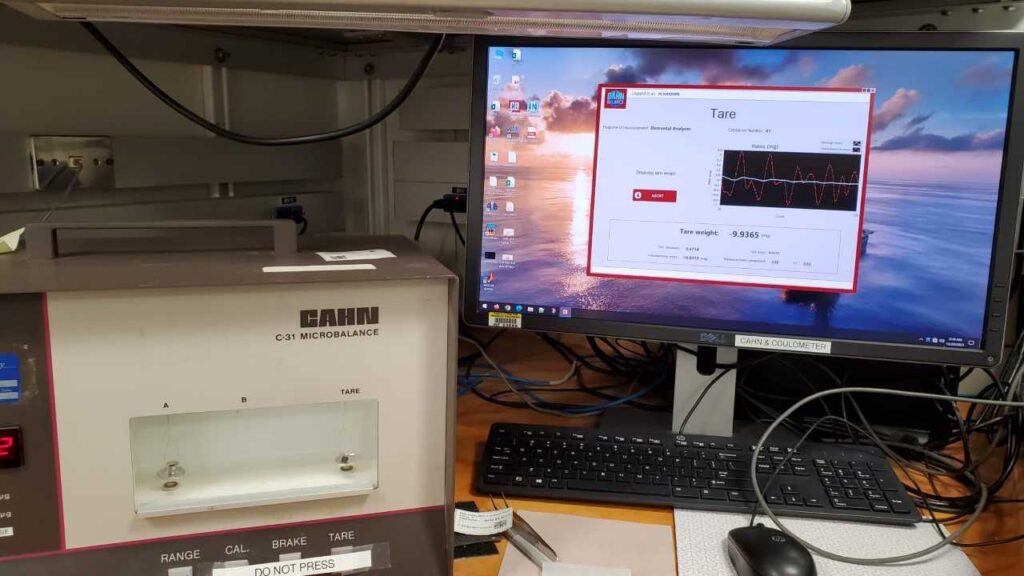
How scientists at sea weigh samples
If you want to know if you’ve gained a few pounds from eating plates of holiday food on land, all you have to do is step on a scale. Gravity pulls us down onto the scale’s surface, it measures the force being applied by your weight, you read the numbers the scale displays, and you know your weight just a few moments later.
At sea, getting that same information is much more of a challenge.
If you step on a typical scale at sea, the numbers don’t settle. They keep changing.
That is because the ocean waves are always causing the ship to move. This generates forces that constantly change directions. In rougher seas, these forces are more extreme, making even walking through ship halls difficult. Normal land-based scales haven’t built up their sea legs and can’t deal with these extra forces on top of Earth’s gravity.
But for the Geochemistry Lab on the JOIDES Resolution, getting accurate weights while at sea is crucial. Scientists need to determine the masses of samples taken from the cores and chemicals used in reactions required for gathering data.

Credit: Kellan Moss, IODP
While mass and weight aren’t the same thing, they are closely related. The mass of an object represents how much matter makes it up. This is a constant that doesn’t change. On the other hand, the weight is equal to the mass multiplied by the current gravitational force on the object. On Earth, this very convenient because the gravitational force is considered “1 g.” If you multiply anything by 1, you get the same number. That’s why your mass and weight will be the same on Earth.
However, when the waves of the ocean move the ship around creating forces other than gravity that the scale isn’t used to, it makes things more confusing for the device. The scale has no reason to think you’ve somehow changed Earth’s gravity or traveled to Mars, so its readings will interpret those forces as your object having more or less mass.
The solution for the JOIDES science team is a Cahn Microbalance and custom software developed by IODP’s own Tim Blaisdell to display the weight measurements on ship computers.
“When we weigh something on shore, you put your sample on the scale and you wait for it to teeter out and settle down. Then you write that measurement down. That, in this sense, is called one measurement count,” chemistry lab specialist Oscar Cavazos said. “On the boat we calculate the mass over a series of counts. We can set 100 counts up to 340 counts.”

Credit: Clara Blattler, IODP
These counts are taken every second or half second, creating an ocean-wave-like pattern in mass measurements. Though they might cover a large range of values, by averaging them the microbalance provides a close approximation of the actual mass of the sample. The rougher the seas, the more counts the chemistry team takes to ensure an accurate mass for the samples are obtained.
However, the tradeoff for a more accurate measurement is time. Typical mass measurements take 3-4 minutes while at sea. In rough seas they can take as long as 5-6 minutes. If measurements take longer than that because of extremely rough ocean conditions, science teams sometimes choose to stop weighing and wait for conditions to improve.
“It takes patience. You can’t rush,” says Cavazos.
This scale is a small but important part of the large process that technicians and scientists are moving cores through onboard Expedition 401. Science at sea isn’t always easy, but it’s worth it for the impactful research we can’t do any other way.